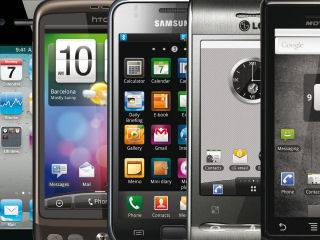Every 10 years, a cataclysm kills most of the mobile brands - and we are on the threshold of the next
 Around 1994, most mobile brands with claims of global dominance disappeared or returned to their home markets. The same thing happened in 2003. And now we are close to the next Death of the Gods, a period of destruction and chaos that only a few manufacturers will survive.
Around 1994, most mobile brands with claims of global dominance disappeared or returned to their home markets. The same thing happened in 2003. And now we are close to the next Death of the Gods, a period of destruction and chaos that only a few manufacturers will survive.In 1993-1995, the Great Collapse was caused by the transition from analog networks to digital (GSM, TDMA, CDMA). Most vendors were caught off guard when GSM began to spread faster than expected. Companies with extensive development programs for analog devices (IBM, Benefon, Blaupunkt, OKI, etc.) simply could not cope with the rapid changes.
The IBM Simon smartphone was simply outstanding for 1992 with its touchscreen and fax support. Benefon Beta was equipped with a large screen and could work up to 4 days without recharging. However, both manufacturers with their excellent devices were swept away from the international market in the mid-90s, when the market began to consolidate around Motorola, Ericsson and Nokia - companies that were the first to switch to digital systems.
')
Soon, 80% of the fast-growing global mobile phone market was controlled by this Big Three. Then, in the late 90s, new companies entered the digital mobile boom. Siemens, Alcatel, Sagem, Philips, Mitsubishi, NEC and others started an aggressive expansion policy in the global market that lasted until the early 2000s, when the epic crisis brought them all out of the game.
After the tough market shake-up in the period from 2001 to 2003, many believed that the market would never grow faster than 6% per year. Of course, by the end of 2004, the industry again gained momentum with a 30% annual growth in the wake of the introduction of 3G and huge demand from customers for phones with color screens. And again a group of young applicants appeared on the market - Apple, HTC, LG, Huawei, ZTE and other companies began to implement plans to seize world domination.
And here we are again on the verge of destruction.
The mobile phone industry pulsates like an amoeba, the number of vendors decreases and increases with about a 10-year cycle. The number of manufacturers grew in the 80s, then in the 90s, then in the 00s. After each explosion, a crisis inevitably followed, which washed away most of the competitors. Around 1994, the trigger was the rapid collapse of the analog phone market, and around 2003, the effects of the financial crisis of 2001. In 2014, this could be a combination of a slowdown in the market and a deep crisis in Europe.
At the end of 2001, smartphone sales grew by 50% per year. It was a moment when companies, from HTC to Huawei, developed ambitious growth plans, which, in the end, turned out to be very optimistic. By the end of 2012, the growth rate of the smartphone market fell to a still decent 36%. But if growth rates fall to 20% by the end of 2013, the hour of reckoning will come for the smartphone market.
Weak demand in Europe has already been a factor in the slowdown in supply volumes for Apple, HTC and LG. Over the past two months, key European markets have shown a striking weakness: -4% in Germany and -10% in Spain. And since Apple and Samsung are flourishing there, the places for promoting the rest are Nokia, BlackBerry, HTC, LG, Huawei, ZTE, Sony, etc. - no longer remains.
Most of these companies will be forced to follow in the footsteps of IBM, Siemens, Alcatel, NEC and Mitsubishi - to return to their home markets or to close. One or two can miraculously survive and challenge the all-powerful Samople duopoly. But within three years we can return to 1998 and see that the three leading brands hold 80% of the global handset market.
And everything will start again.
Source: https://habr.com/ru/post/169379/
All Articles